
| Version | Summary | Created by | Modification | Content Size | Created at | Operation |
|---|---|---|---|---|---|---|
| 1 | Oleg Manaenkov | -- | 6013 | 2023-12-27 21:20:08 | | | |
| 2 | Mona Zou | Meta information modification | 6013 | 2023-12-28 09:20:44 | | | | |
| 3 | Mona Zou | Meta information modification | 6013 | 2023-12-28 09:21:03 | | | | |
| 4 | Mona Zou | -4 word(s) | 6009 | 2024-01-03 02:41:46 | | |
Video Upload Options
Platform chemicals, also known as chemical building blocks, are substances that serve as starting materials for the synthesis of various value-added products, which find a wide range of applications. These chemicals are the key ingredients for many fine and specialty chemicals. Most of the transformations of platform chemicals are catalytic processes, which should meet the requirements of sustainable chemistry: to be not toxic for humans, to be safe for the environment, and to allow multiple reuses of catalytic materials. Hypercrosslinked polymers are already widely applied in industry as excellent (ad)sorbents. Their use for the synthesis of heterogeneous catalysts is a relatively new but dynamically developing area. A new class of heterogeneous catalysts based on nanoparticles of catalytically active metals stabilized in a polymer matrix of hypercrosslinked polystyrene (HPS) are provided, their synthesis, properties, and application to produce several platform chemicals from renewable raw materials. Some transformations of platform chemicals into compounds with high added value are addressed and multiple perspectives are discussed.
1. Hydrolytic Hydrogenation of Cellulose to Hexitols
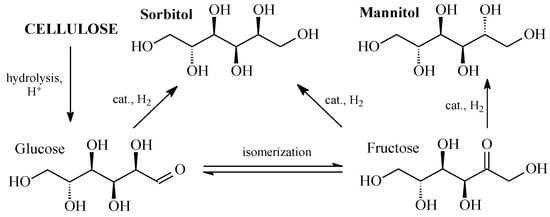
2. Magnetic Catalysts Based on HPS in the Conversion of Plant Polysaccharides
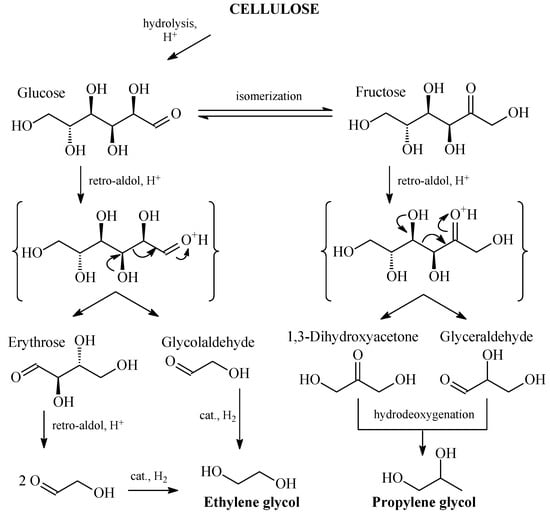

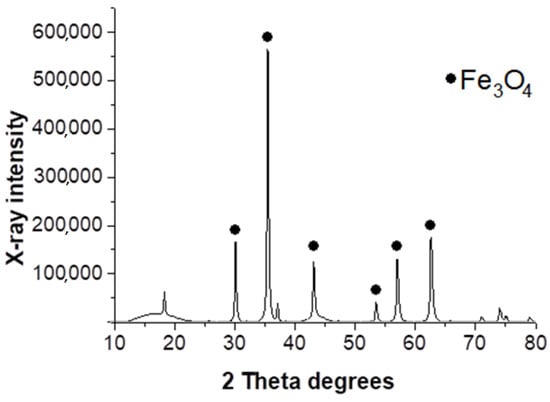
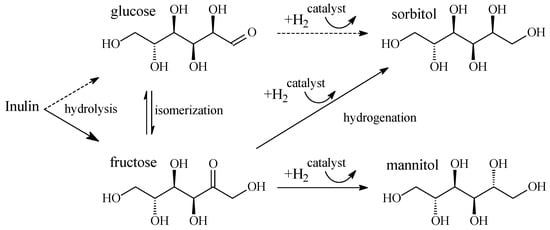
3. Hydrolytic Oxidation of Cellobiose to Glucaric Acid
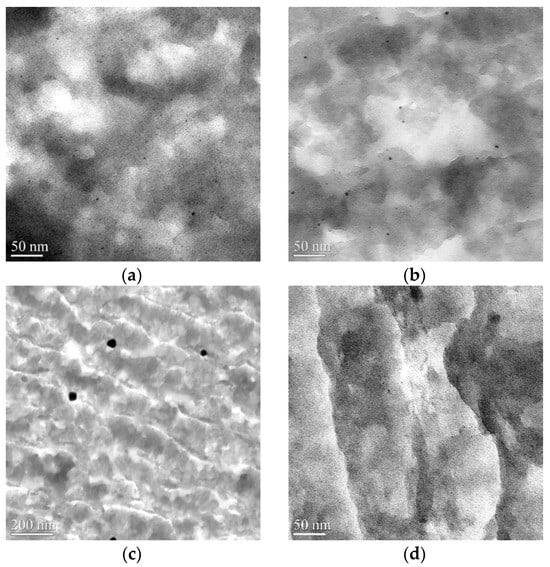
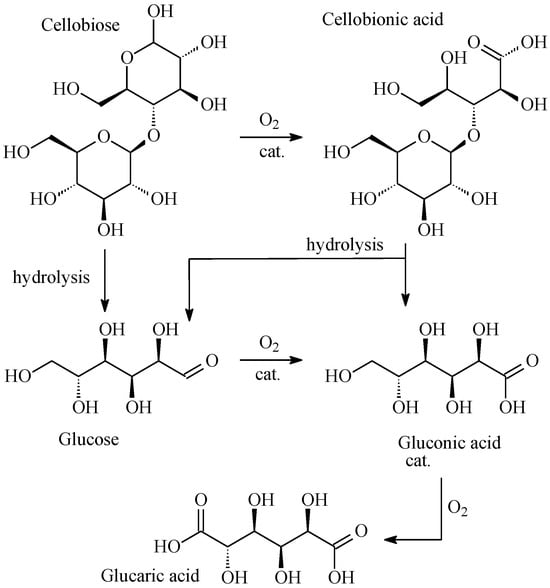
4. Hydrogenation of Furfural
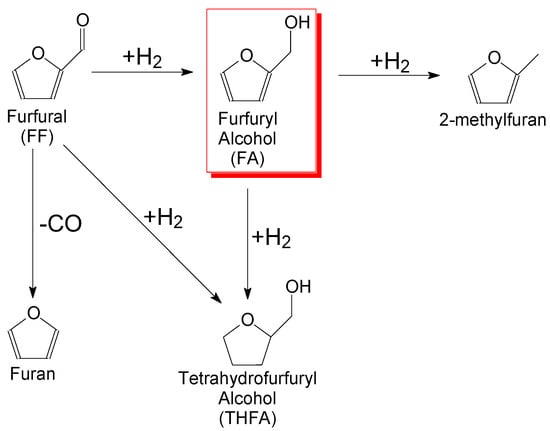

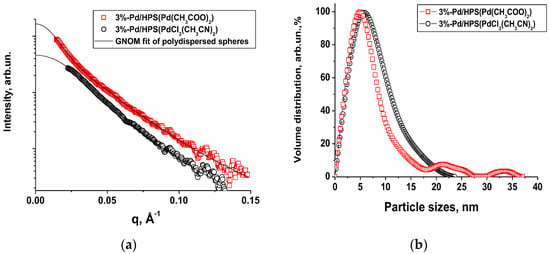
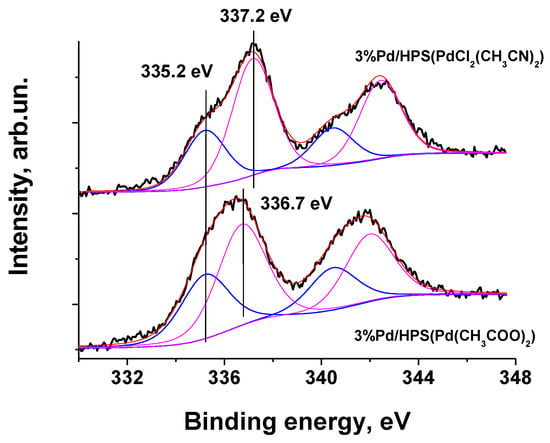
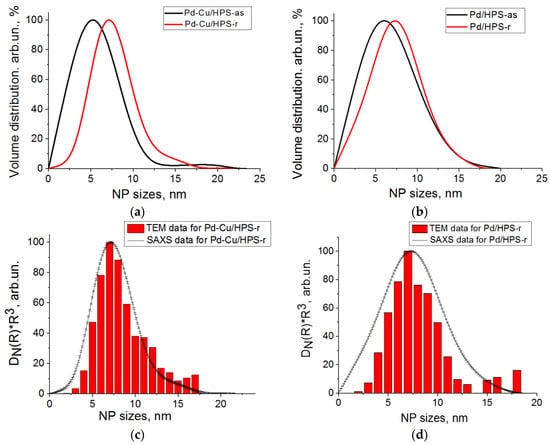
5. Hydrogenation of Levulinic Acid
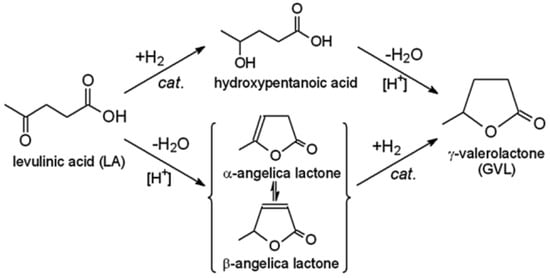
References
- Werpy, T.; Peterson, G. Top Value Added Chemicals from Biomass Volume I—Results of Screening for Potential Candidates from Sugars and Synthesis Gas; National Renewable Energy Laboratory: Golden, CO, USA, 2004; pp. 1–76.
- Lee, J.; Jung, S.; Kim, Y.T.; Kim, H.J.; Kim, K.-H. Catalytic and electrocatalytic conversion of glucose into value-added chemicals. Renew. Sust. Energy Rev. 2023, 181, 113337.
- Yang, X.; Li, X.; Zhao, J.; Liang, J.; Zhu, J. Production of Sorbitol via Hydrogenation of Glucose over Ruthenium Coordinated with Amino Styrene-co-maleic Anhydride Polymer Encapsulated on Activated Carbon (Ru/ASMA@AC) Catalyst. Molecules 2023, 28, 4830.
- Ahmed, M.J.; Hameed, B.H. Hydrogenation of glucose and fructose into hexitols over heterogeneous catalysts: A review. J. Taiwan Inst. Chem. Eng. 2019, 96, 341–352.
- Newman, A.W.; Vitez, I.M.; Mueller, R.L.; Kiesnowski, C.C.; Findlay, W.P.; Rodriguez, C.; Davidovich, M.; McGeorge, G. Sorbitol. In Analytical Profiles of Drug Substances and Excipients; Brittain, H.G., Ed.; Academic Press: Cambridge, MA, USA, 1999; Volume 26, pp. 459–502.
- Chen, M.; Wang, Y.; Lu, J.; Du, J.; Tao, Y.; Cheng, Y.; Li, Q.; Wang, H. Combinatorial pretreatments of reed straw using liquid hot water and lactic acid for fermentable sugar production. Fuel 2023, 331, 125916.
- Zhang, Y.; Zhang, G.; Chen, T. Efficient one-pot conversion of cellulose to sorbitol over Ni-based carbon. Fuel 2023, 339, 127447.
- Li, Z.Y.; Liu, Y.; Liu, C.F.; Wu, S.B.; Wei, W.Q. Direct conversion of cellulose into sorbitol catalyzed by a bifunctional catalyst. Bioresour. Technol. 2019, 274, 190–197.
- Polidoro, D.; Stamilla, G.; Feltracco, M.; Gambaro, A.; Perosa, A.; Selva, M. CO2-assisted hydrolytic hydrogenation of cellulose and cellulose-based waste into sorbitol over commercial Ru/C. Green Chem. 2023, 25, 6677–6685.
- Rinaldi, R. Catalytic Hydrogenation for Biomass Valorization; RSC Publishing: Cambridge, UK, 2014; 310p.
- Vasyunina, N.A.; Balandin, A.A.; Chepigo, S.V.; Barysheva, G.S. Catalytic hydrogenation of wood and other vegetable materials. Bull. Acad. Sci. USSR Div. Chem. Sci. 1960, 9, 1419.
- Chepigo, S.V.; Balandin, A.A.; Vasyunina, N.A.; Barysheva, G.S. Preparation of polyhydric alcohols by catalytic transformation of polysaccharides of plant materials. Chem. Sci. Ind. 1957, 2, 416–424. (In Russian)
- Vasyunina, N.A.; Pogosov, Y.L.; Balandin, A.A.; Chepigo, S.V.; Barysheva, G.S. Description of the Invention to Copyright Certificate No. 168666 Method for Producing Polyhydric Alcohols from Cellulose. 1962. (In Russian). Available online: https://patentdb.ru/image/367900 (accessed on 7 December 2023).
- Anastas, P.T.; Warner, J.C. Green Chemistry: Theory and Practice; Oxford University Press: New York, NY, USA, 2000; 132p.
- Yang, P.; Kobayashi, H.; Fukuoka, A. Recent Developments in the Catalytic Conversion of Cellulose into Valuable Chemicals. Chin. J. Catal. 2011, 32, 716–722.
- Dhepe, P.L.; Fukuoka, A. Cracking of Cellulose over Supported Metal Catalysts. Catal. Surv. Asia 2007, 11, 186–191.
- Luo, C.; Wang, S.; Liu, H. Cellulose Conversion into Polyols Catalyzed by Reversibly Formed Acids and Supported Ruthenium Clusters in Hot Water. Ang. Chem. Int. Ed. 2007, 46, 7636–7639.
- Shitu, A.; Izhar, S.; Tahir, T.M. Sub-critical water as a green solvent for production of valuable materials from agricultural waste biomass: A review of recent work. Glob. J. Environ. Sci. Manag. 2015, 1, 255–264.
- Sasaki, M.; Kabyemela, B.; Malaluan, R.; Hirose, S.; Takeda, N.; Adschiri, T.; Arai, K. Cellulose hydrolysis in subcritical and supercritical water. J. Supercrit. Fluid. 1998, 13, 261–268.
- Sasaki, M.; Fang, Z.; Fukushima, Y.; Adschiri, T.; Arai, K. Dissolution and Hydrolysis of Cellulose in Subcritical and Supercritical Water. Ind. Eng. Chem. Res. 2000, 39, 2883–2890.
- Makhubela, B.C.E.; Darkwa, J. The Role of Noble Metal Catalysts in Conversion of Biomass and Bio-derived Intermediates to Fuels and Chemicals. Johns. Matthey Technol. Rev. 2018, 62, 4–31.
- Li, Y.; Liao, Y.; Cao, X.; Wang, T.; Ma, L.; Long, J.; Liu, Q.; Xua, Y. Advances in hexitol and ethylene glycol production by one-pot hydrolytic hydrogenation and hydrogenolysis of cellulose. Biomass Bioenergy 2015, 74, 148–161.
- Ribeiro, L.S.; Órfão, J.J.M.; Pereira, M.F.R. Comparative study of different catalysts for the direct conversion of cellulose to sorbitol. Green Process Synth. 2015, 4, 71–78.
- Gromov, N.V.; Medvedeva, T.B.; Rodikova, Y.A.; Timofeeva, M.N.; Panchenko, V.N.; Taran, O.P.; Kozhevnikov, I.V.; Parmon, V.N. One-pot synthesis of sorbitol via hydrolysis-hydrogenation of cellulose in the presence of Ru-containing composites. Biores. Technol. 2021, 319, 124122.
- Carlier, S.; Gripekoven, J.; Philippo, M.; Hermans, S. Ru on N-doped carbon supports for the direct hydrogenation of cellobiose into sorbitol. Appl. Catal. B Environ. 2021, 282, 119515.
- Gromov, N.V.; Medvedeva, T.B.; Taran, O.P.; Timofeeva, M.N.; Said-Aizpuru, O.; Panchenko, V.N.; Gerasimov, E.Y.; Kozhevnikov, I.V.; Parmon, V.N. The main factors affecting the catalytic properties of Ru/Cs-HPA systems in one-pot hydrolysis-hydrogenation of cellulose to sorbitol. Appl. Catal. A Gen. 2020, 595, 117489.
- Matveeva, V.G.; Sulman, E.M.; Manaenkov, O.V.; Filatova, A.E.; Kislitza, O.V.; Sidorov, A.I.; Doluda, V.Y.; Sulman, M.G.; Rebrov, E.V. Hydrolytic hydrogenation of cellulose in subcritical water with the use of the Ru-containing polymeric catalysts. Catal. Today 2017, 280, 45–50.
- Sulman, E.; Doluda, V.; Dzwigaj, S.; Marceau, E.; Kustov, L.; Tkachenko, O.; Bykov, A.; Matveeva, V.; Sulman, M.; Lakina, N. Catalytic properties of Ru nanoparticles introduced in a matrix of hypercrosslinked polystyrene toward the low-temperature oxidation of D-glucose. J. Mol. Catal. A Chem. 2007, 278, 112–119.
- Sapunov, V.N.; Grigoryev, M.Y.; Sulman, E.M.; Konyaeva, M.B.; Matveeva, V.G. D-Glucose hydrogenation over Ru nanoparticles embedded in mesoporous hypercrosslinked polystyrene. J. Phys. Chem. A 2013, 117, 4073–4083.
- Aleksienko, N.N.; Pastukhov, A.V.; Davankov, V.A.; Belyakova, L.D.; Voloshchuk, A.M. Sorption properties of carbonizates of hypercrosslinked polystyrene. Russ. J. Phys. Chem. A 2004, 78, 1992–1998.
- Adsuar-García, M.D.; Flores-Lasluisa, J.X.; Azar, F.Z.; Román-Martínez, M.C. Carbon-Black-Supported Ru Catalysts for the Valorization of Cellulose through Hydrolytic Hydrogenation. Catalysts 2018, 8, 572.
- Rey-Raap, N.; Ribeiro, L.S.; Órfão, J.J.M.; Figueiredo, J.L.; Pereira, M.F.R. Catalytic conversion of cellulose to sorbitol over Ru supported on biomass-derived carbon-based materials. Appl. Catal. B Environ. 2019, 256, 117826.
- Zhang, J.; Wu, S.; Liu, Y. Direct conversion of cellulose into sorbitol over a magnetic catalyst in an extremely low concentration acid system. Energy Fuels 2014, 28, 424–4246.
- Wu, Y.; He, M.; Liu, X.; Wang, X.; Song, Y.; Li, C.; Liu, S.; Huang, L. One-pot Catalytic Conversion of Cellulose to Sorbitol and Isosorbide over Bifunctional Ni/TaOPO4 Catalysts. Chemistry Select 2022, 7, 27 e202200341.
- Mao, F.; Chen, S.; Zhang, Q.; Yang, L.; Wan, F.; Jiang, D.; Xiong, M.; Zhang, C.; Liu, Y.; Fu, Z. Ru/P-Containing Porous Biochar-Efficiently Catalyzed Cascade Conversion of Cellulose to Sorbitol in Water under Medium-Pressure H2 Atmosphere. Bull. Chem. Soc. Jap. 2020, 93, 1026–1035.
- Azar, F.-Z.; Lillo-Ródenas, M.Á.; Román-Martínez, M.C. Mesoporous Activated Carbon Supported Ru Catalysts to Efficiently Convert Cellulose into Sorbitol by Hydrolytic Hydrogenation. Energies 2020, 13, 4394.
- Frecha, E.; Remón, J.; Torres, D.; Suelves, I.; Pinilla, J.L. Optimisation of the processing conditions of hydrolytic hydrogenation of cellulose using carbon nanofiber supported Ni catalysts. Catal. Today 2023, 423, 114002.
- Zhang, G.; Chen, T.; Zhang, Y.; Liu, T.; Wang, G. Effective Conversion of Cellulose to Sorbitol Catalyzed by Mesoporous Carbon Supported Ruthenium Combined with Zirconium Phosphate. Catal. Lett. 2020, 150, 2294–2303.
- Ndolomingo, M.J.; Bingwa, N.; Meijboom, R. Review of supported metal nanoparticles: Synthesis methodologies, advantages and application as catalysts. J. Mater. Sci. 2020, 55, 6195–6241.
- Rossi, L.M.; Ferraz, C.P.; Fiorio, J.L.; Vono, L.L.R. Magnetically Recoverable Nanoparticle Catalysts. In Nanoparticles in Catalysis: Advances in Synthesis and Applications, 1st ed.; Philippot, K., Roucoux, A., Eds.; WILEY-VCH GmbH: Weinheim, Germany, 2021; pp. 159–181.
- Goesmann, H.; Feldmann, C. Nanoparticulate functional materials. Angew. Chem. Int. Ed. 2010, 49, 1362–1395.
- Polshettiwar, V.; Luque, R.; Fihri, A.; Zhu, H.; Bouhrara, M.; Basset, J.M. Magnetically recoverable nanocatalysts. Chem. Rev. 2011, 111, 3036–3075.
- Rossi, L.M.; Garcia, M.A.S.; Vono, L.L.R. Recent advances in the development of magnetically recoverable metal nanoparticle catalysts. J. Braz. Chem. Soc. 2012, 23, 1959–1971.
- Rai, P.; Gupta, D. Magnetic nanoparticles as green catalysts in organic synthesis—A review. Synt. Comm. 2021, 51, 3059–3083.
- Zhang, Q.; Yang, X.; Guan, J. Applications of Magnetic Nanomaterials in Heterogeneous Catalysis. CS Appl. Nano Mater. 2019, 2, 4681–4697.
- Xie, W.; Li, J. Magnetic solid catalysts for sustainable and cleaner biodiesel production: A comprehensive review. Renew. Sust. Energy Rev. 2023, 171, 113017.
- Kannapu, H.P.R.; Bathula, H.B.; Suh, Y.-W. Functional magnetic catalysts for the synthesis of biomass-derived fuels and chemicals. In Advanced Functional Solid Catalysts for Biomass Valorization, 1st ed.; Hussain, C.M., Sudarsanam, P., Eds.; Elsevier Inc.: Amsterdam, The Netherlands, 2020; pp. 199–223.
- Manaenkov, O.; Kislitsa, O.; Ratkevich, E.; Matveeva, V.; Sulman, M.; Sulman, E. Ru-Fe3O4-containing Polymeric Catalysts for Cellulose Hydrogenolysis. Chem. Eng. Trans. 2019, 74, 79–84.
- Manaenkov, O.; Kosivtsov, Y.; Sapunov, V.; Kislitsa, O.; Sulman, M.; Bykov, A.; Sidorov, A.; Matveeva, V. Kinetic Modeling for the “One-Pot” Hydrogenolysis of Cellulose to Glycols over Ru@Fe3O4/Polymer Catalyst. Reactions 2022, 3, 1–11.
- Yue, H.; Zhao, Y.; Ma, X.; Gong, J. Ethylene glycol: Properties, synthesis, and applications. Crit. Rev. Chem. Soc. Rev. 2012, 41, 4218–4244.
- Sugiyama, S.; Tanaka, H.; Bando, T.; Nakagawa, K.; Sotowa, K.-I.; Katou, Y.; Mori, T.; Yasukawa, T.; Ninomiya, W. Liquid-phase oxidation of propylene glycol using heavy-metal-free Pd/C under pressurized oxygen. Catal. Today 2013, 203, 116–121.
- Manaenkov, O.V.; Kislitsa, O.V.; Matveeva, V.G.; Kosivtsov, Y.Y.; Sulman, M.G. Kinetics of the hydrolytic hydrogenation of inulin to mannitol on Ru-containing magnetic catalyst. ChemChemTech 2023, 66, 70–76.
- Sulman, E.; Manaenkov, O.; Kislitsa, O.; Ratkevich, E.; Sulman, M.; Matveeva, V. Magnetically Recoverable Catalysts for Cellulose and Inulin Conversion. Chem. Eng. Trans. 2020, 81, 1153–1158.
- Zheng, M.; Pang, J.; Sun, R.; Wang, A.; Zhang, T. Selectivity Control for Cellulose to Diols: Dancing on Eggs. ACS Catal. 2017, 7, 1939–1954.
- Manaenkov, O.; Mann, J.; Kislitza, O.; Losovyj, Y.; Stein, B.; Morgan, D.; Pink, M.; Lependina, O.; Shifrina, Z.; Matveeva, V.; et al. Ru-containing Magnetically Recoverable Catalysts: A Sustainable Pathway from Cellulose to Ethylene and Propylene Glycols. ACS Appl. Mater. Interfaces 2016, 8, 21285–21293.
- Laurikėnas, A.; Barkauskas, J.; Reklaitis, J.; Niaura, G.; Baltrūnas, D.; Kareiva, A. Formation peculiarities of iron (III) acetate: Potential precursor for iron metal-organic frameworks (MOFs). Lith. J. Phys. 2016, 56, 35–41.
- Musolino, M.G.; Scarpino, L.A.; Mauriello, F.; Pietropaolo, R. Glycerol Hydrogenolysis Promoted by Supported Palladium Catalysts. ChemSusChem 2011, 4, 1143–1150.
- Gumina, G.; Easterday, R.; Malyutin, A.G.; Budgin, A.M.; Stein, B.D.; Nikoshvili, L.Z.; Matveeva, V.G.; Sulman, E.M.; Morgan, D.G.; Bronstein, L.M. γ-Fe2O3 Nanoparticle Surface Controls PtFe Nanoparticle Growth and Catalytic Properties. Nanoscale 2013, 5, 2921–2927.
- Easterday, R.; Sanchez-Felix, O.; Losovyj, Y.; Pink, M.; Stein, B.D.; Morgan, D.G.; Rakitin, M.; Doluda, V.Y.; Sulman, M.; Mahmoud, W.E.; et al. Design of Ruthenium/Iron Oxide Nanoparticle Mixtures for Hydrogenation of Nitrobenzene to Aniline: Catalytic Behavior Influenced by Iron Oxide Nanoparticles. Catal. Sci. Technol. 2015, 5, 1902–1910.
- Milone, C.; Crisafulli, C.; Ingoglia, R.; Schipilliti, L.; Galvagno, S. A Comparative Study on the Selective Hydrogenation of Alpha, Beta Unsaturated Aldehyde and Ketone to Unsaturated Alcohols on Au Supported Catalysts. Catal. Today 2007, 122, 341–351.
- Johansson, E.; Prade, T.; Angelidaki, I.; Svensson, S.-E.; Newson, W.R.; Gunnarsson, I.B.; Hovmalm, H.P. Economically Viable Components from Jerusalem Artichoke (Helianthus tuberosus L.) in a Biorefinery Concept. Int. J. Mol. Sci. 2015, 16, 8997–9016.
- Gu, J.; Huang, H.; Huang, Y.; Sun, H.; Xu, H. Hypertonic saline or mannitol for treating elevated intracranial pressure in traumatic brain injury: A meta-analysis of randomized controlled trials. Neurosurg. Rev. 2019, 42, 499–509.
- Imhof, P.J.; Van der Waal, J.C. (Eds.) Catalytic Process Development for Renewable Materials; WILEY-VCH GmbH: Weinheim, Germany, 2013.
- Ohrem, H.L.; Schornick, E.; Kalivoda, A.; Ognibene, R. Why is mannitol becoming more and more popular as a pharmaceutical excipient in solid dosage forms? Pharmaceut. Dev. Technol. 2014, 19, 257–262.
- Heinen, A.W.; Peters, J.A.; van Bekkum, H. The combined hydrolysis and hydrogenation of inulin catalyzed by bifunctional Ru/C. Carbohydr. Res. 2001, 330, 381–390.
- Heinen, A.W.; Papadogianakis, G.; Sheldon, R.A.; Peters, J.A.; van Bekkum, H. Factors effecting the hydrogenation of fructose with a water soluble Ru–TPPTS complex. A comparison between homogeneous and heterogeneous catalysis. J. Mol. Catal. A Chem. 1999, 142, 17–26.
- Deng, W.; Zhu, E.; Liu, M.; Zhang, Q.; Wang, Y. Cs-substituted tungstophosphate-supported ruthenium nanoparticles as efficient and robust bifunctional catalysts for the conversion of inulin and cellulose into hexitols in water in the presence of H2. RSC Adv. 2014, 4, 43131–43141.
- Manaenkov, O.V.; Ratkevich, E.A.; Kislitsa, O.V.; Lawson, B.; Morgan, D.G.; Stepacheva, A.A.; Matveeva, V.G.; Sulman, M.G.; Sulman, E.M.; Bronstein, L.M. Magnetically recoverable catalysts for the conversion of inulin to mannitol. Energy 2018, 154, 1–6.
- Grand view Research, Glucaric Acid Market Size, Share & Trends Analysis by Product (Pure Glucaric Acid, D-Glucaric Acid-1,4-lactone), by Application (Food Ingredients, Detergents, Corrosion Inhibitors), & Segment Forecasts, 2017–2025. Available online: https://www.grandviewresearch.com/industry-analysis/glucaric-acid-market (accessed on 14 October 2023).
- Wu, Y.; Enomoto-Rogers, Y.; Masaki, H.; Iwata, T. Synthesis of crystalline and amphiphilic polymers from D-glucaric acid. ACS Sustain. Chem. Eng. 2016, 4, 3812–3819.
- Mehtiö, T.; Toivari, M.; Wiebe, M.G.; Harlin, A.; Penttilä, M.; Koivula, A. Production and applications of carbohydrate-derived sugar acids as generic biobased chemicals. Crit. Rev. Biotechnol. 2016, 36, 904–916.
- Reports and Data. Available online: https://www.globenewswire.com/news-release/2020/08/24/2082896/0/en/Glucaric-Acid-Market-To-Reach-USD-1-46-Billion-By-2027-Reports-and-Data.html (accessed on 14 October 2023).
- Smith, T.N.; Hash, K.; Davey, C.-L.; Mills, H.; Williams, H.; Kiely, D.E. Modifications in the nitric acid oxidation of D-glucose. Carbohydr. Res. 2012, 350, 6–13.
- Sakuta, R.; Nakamura, N. Production of Hexaric Acids from Biomass. Int. J. Mol. Sci. 2019, 20, 3660.
- Thaore, V.B.; Armstrong, R.D.; Hutchings, G.J.; Knight, D.W.; Chadwick, D.; Shah, N. Sustainable production of glucaric acid from corn stover via glucose oxidation: An assessment of homogeneous and heterogeneous catalytic oxidation production routes. Chem. Eng. Res. Des. 2020, 153, 337–349.
- Sidorov, S.N.; Volkov, I.V.; Davankov, V.A.; Tsyurupa, M.P.; Valetsky, P.M.; Bronstein, L.M.; Karlinsey, R.; Zwanziger, J.W.; Matveeva, V.G.; Sulman, E.M.; et al. Platinum-Containing HyperCross-Linked Polystyrene as a Modifier-Free Selective Catalyst for L-Sorbose Oxidation. J. Am. Chem. Soc. 2001, 123, 10502–10510.
- Manaenkov, O.; Kislitsa, O.; Ratkevich, E.; Kosivtsov, Y.; Sapunov, V.; Matveeva, V. Hydrolytic Oxidation of Cellobiose Using Catalysts Containing Noble Metals. Reactions 2022, 3, 589–601.
- Nikoshvili, L.Z.; Shkerina, K.N.; Bykov, A.V.; Sidorov, A.I.; Vasiliev, A.L.; Sulman, M.G.; Kiwi-Minsker, L. Mono- and Bimetallic Nanoparticles Stabilized by an Aromatic Polymeric Network for a Suzuki Cross-Coupling Reaction. Nanomaterials 2022, 12, 94.
- Morawa Eblagon, K.; Pereira, M.F.R.; Figueiredo, J.L. One-pot oxidation of cellobiose to gluconic acid. Unprecedented high selectivity on bifunctional gold catalysts over mesoporous carbon by integrated texture and surface chemistry optimization. Appl. Catal. B Environ. 2016, 184, 381–396.
- Santos Viana, G.; Estevam Lau Bomfim, J.A.; Pereira da Silva, G.; Souza de Carvalho Filho, J.F.; Sanae Tokumoto, M.; Cesário Rangel, F.; Serpa da Cruz, R. Design of Heterogeneous Catalysts for the Conversion of Furfural to C5 Derivatives: A Brief Review. Catal. Res. 2022, 2, 026.
- Racha, A.; Samanta, C.; Sreekantan, S.; Marimuthu, B. Review on Catalytic Hydrogenation of Biomass-Derived Furfural to Furfuryl Alcohol: Recent Advances and Future Trends. Energy Fuels 2023, 37, 11475–11496.
- Salnikova, K.E.; Larichev, Y.V.; Sulman, E.M.; Bykov, A.V.; Sidorov, A.I.; Demidenko, G.N.; Sulman, M.G.; Bronstein, L.M.; Matveeva, V.G. Selective Hydrogenation of Biomass-Derived Furfural: Enhanced Catalytic Performance of Pd-Cu Alloy Nanoparticles in Porous Polymer. ChemPlusChem. 2020, 85, 1697–1703.
- Jorqueira, D.S.S.; de Lima, L.F.; Moya, S.F.; Vilcocq, L.; Richard, D.; Fraga, M.A.; Suppino, R.S. Critical review of furfural and furfuryl alcohol production: Past, present, and future on heterogeneous catalysis. Appl. Catal. A Gen. 2023, 665, 119360.
- Salnikova, K.E.; Matveeva, V.G.; Larichev, Y.V.; Bykov, A.V.; Demidenko, G.N.; Shkileva, I.P.; Sulman, M.G. The liquid phase catalytic hydrogenation of furfural to furfuryl alcohol. Catal. Today 2019, 329, 142–148.
- Lide, D.R. (Ed.) CRC Handbook of Chemistry and Physics: A Ready-Reference Book of Chemical and Physical Data; CRC Press: Boca Raton, FL, USA, 1999.
- Tsvetkova, I.B.; Matveeva, V.G.; Doluda, V.Y.; Bykov, A.V.; Sidorov, A.I.; Schennikov, S.V.; Sulman, M.G.; Valetsky, P.M.; Stein, B.D.; Chen, C.-H.; et al. Pd(II) nanoparticles in porous polystyrene: Factors influencing the nanoparticle size and catalytic properties. J. Mater. Chem. 2012, 22, 6441–6448.
- Liu, P.; Qiu, W.; Zhang, C.; Tan, Q.; Zhang, C.; Zhang, W.; Song, Y.; Wang, H.; Li, C. Kinetics of Furfural Hydrogenation over Bimetallic Overlayer Catalysts and the Effect of Oxygen Vacancy Concentration on Product Selectivity. ChemCatChem 2019, 11, 3296–3306.
- Liu, Q.; Xia, B.; Huang, J.; Liao, B.; Liu, H.; Ou, B.; Chen, L.; Zhou, Z. Hypercrosslinked polystyrene microspheres with ultrahigh surface area and their application in gas storage. Mater. Chem. Phys. 2017, 199, 616–622.
- Kohli, K.; Prajapati, R.; Sharma, B.K. Bio-Based Chemicals from Renewable Biomass for Integrated Biorefineries. Energies 2019, 12, 233.
- Kislitsa, O.V.; Manaenkov, O.V.; Ratkevich, E.A.; Sulman, M.G.; Kosivtsov, Y.Y. The Use of WO3-ZSM-5 Zeolites in the Dehydration of Monosaccharides. Chem. Eng. Trans. 2021, 88, 295–300.
- Lopes, E.S.; Gariboti, J.C.J.; Feistel, L.; Rivera, E.C.; Maciel Filho, R.; Tovar, L.P. Acid Hydrolysis-based Sugarcane Bagasse Biorefining for Levulinic Acid Production: Dynamic Mechanistic Modeling Under Varying Operating Conditions. Chem. Eng. Trans. 2020, 80, 217–222.
- Huang, X.; Liu, K.; Vrijbur, W.L.; Ouyang, X.; Iulian Dugulan, A.; Liu, Y.; Tiny Verhoeven, M.W.G.M.; Kosinov, N.A.; Pidko, E.A.; Hensen, E.J.M. Hydrogenation of Levulinic Acid to -Valerolactone over Fe-Re/TiO2 Catalysts. Appl. Catal. B Environ. 2020, 278, 119314.
- Genuino, H.C.; van de Bovenkamp, H.H.; Wilbers, E.; Winkelman, J.G.M.; Goryachev, A.; Hofmann, J.P.; Hensen, E.J.M.; Weckhuysen, B.M.; Bruijnincx, P.C.A.; Heeres, H.J. Catalytic Hydrogenation of Renewable Levulinic Acid to γ-Valerolactone: Insights into the Influence of Feed Impurities on Catalyst Performance in Batch and Flow Reactors. ACS Sustain. Chem. Eng. 2020, 8, 5903–5919.
- Li, W.; Li, F.; Chen, J.; Betancourt, L.E.; Tu, C.; Liao, M.; Ning, X.; Zheng, J.; Li, R. Efficient and sustainable hydrogenation of levulinic acid to gamma-valerolactone in aqueous phase over Ru/MCM-49 catalysts. Ind. Eng. Chem. Res. 2020, 59, 17338–17347.
- Grigorev, M.E.; Mikhailov, S.P.; Bykov, A.V.; Sidorov, A.I.; Tiamina, I.Y.; Vasiliev, A.L.; Nikoshvili, L.Z.; Matveeva, V.G.; Plentz Meneghetti, S.M.; Sulman, M.G.; et al. Mono- and bimetallic (Ru-Co) polymeric catalysts for levulinic acid hydrogenation. Catal. Today 2021, 378, 167–175.
- Luo, W.; Deka, U.; Beale, A.M.; van Eck, E.R.H.; Bruijnincx, P.C.A.; Weckhuysen, B.M. Ruthenium-catalyzed hydrogenation of levulinic acid: Influence of the support and solvent on catalyst selectivity and stability. J. Catal. 2013, 301, 175–186.
- Yu, Z.; Lu, X.; Xiong, J.; Ji, N. Transformation of Levulinic Acid to Valeric Biofuels: A Review on Heterogeneous Bifunctional Catalytic Systems. ChemSusChem 2019, 6, 3915–3930.
- Amarasekara, A.S.; Wiredu, B.; Grady, T.L.; Obregon, R.G.; Margetic, D. Solid acid catalyzed aldol dimerization of levulinic acid for the preparation of C10 renewable fuel and chemical feedstocks. Catal. Commun. 2019, 124, 6–11.
- Sun, P.; Gao, G.; Zhao, Z.; Xia, C.; Li, F. Acidity-regulation for enhancing the stability of Ni/HZSM-5 catalyst for valeric biofuel production. Appl. Catal. B Environ. 2016, 189, 19–25.
- Balla, P.; Seelam, P.K.; Balaga, R.; Rajesh, R.; Perupogu, V.; Liang, T.X. Immobilized highly dispersed Ni nanoparticles over porous carbon as an efficient catalyst for selective hydrogenation of furfural and levulinic acid. J. Environ. Chem. Eng. 2021, 9, 106530.
- Balla, P.; Seelam, P.K.; Rajesh, R.; Balaga, R.; Challa, P.; Sasikumar, G.K.; Perupogu, V.; Lassi, U.; Sungtak, K. Selective hydrogenation of levulinic acid over a highly dispersed and stable copper particles embedded into the ordered mesoporous carbon supported catalyst. Catal. Com. 2023, 178, 106673.
- Sychev, V.V.; Baryshnikov, S.V.; Ivanov, I.P.; Volochaev, M.N.; Taran, O.P. Hydrogenation of levulinic acid to γ-valerolactone in the presence of Ru-containing catalysts based on carbon material “Sibunit”. J. Sib. Fed. Univ. Chem. 2021, 14, 5–20.




